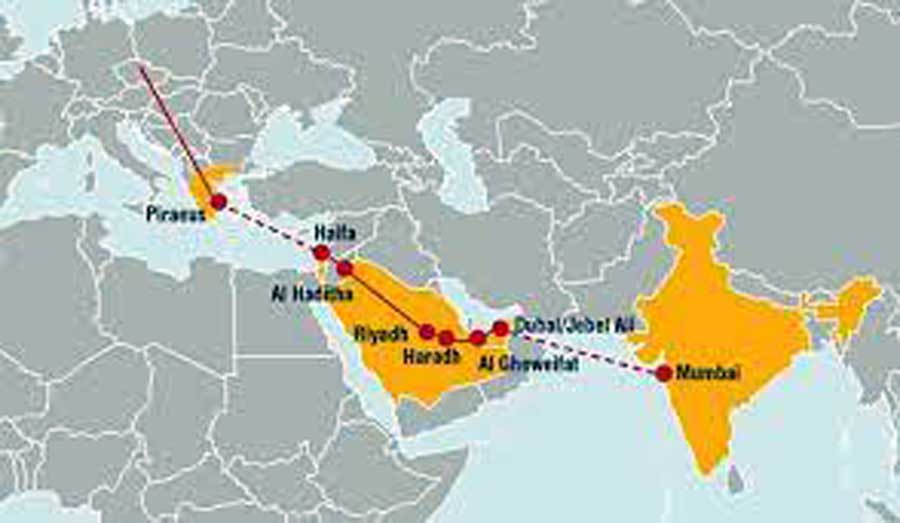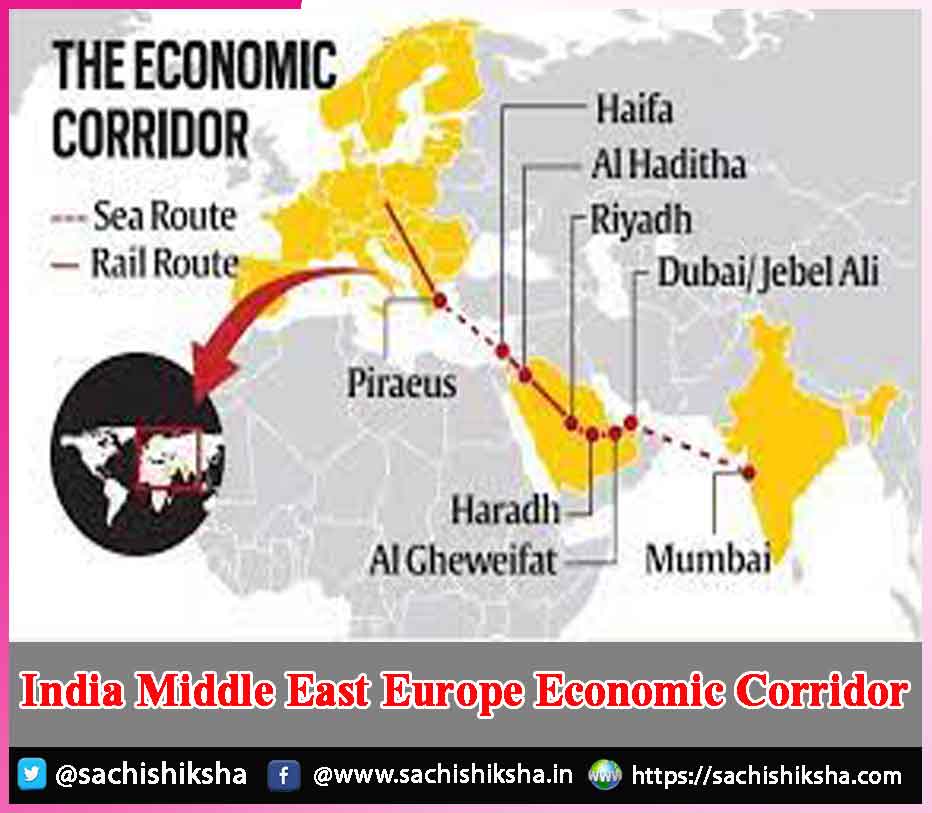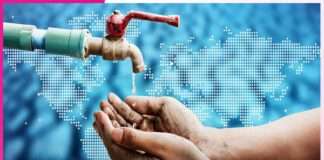India Middle East Europe Economic Corridor
Introduction The representatives of France, Germany, India, Italy, Saudi Arabia, the United Arab Emirates, the United States, and the European Commission presented the India-Middle East-Europe Economic Corridor (IMEC) at the G20 summit in New Delhi in September 2023.
Table of Contents
This enormous investment and trade proposal consists of two corridors:

GCC:
The corridor is going to depend on the UAE and Saudi Arabia’s seaports, roadways, and logistical centers, highlighting the significance of these Gulf Arab governments as vital points in global trade routes. In the framework of the six Gulf Cooperation Council (GCC) governments are responding to the constraints of multi polarity as there are strategic implications to IMEC worthwhile addressing.
With the exception of Oman, every participant of this sub-regional organization is Dialogue Partners in the Shanghai Cooperation Organization (SCO). The UAE and Saudi Arabia were invited to join the BRICS bloc in August; the UAE promptly acknowledged the offer to join, and Saudi Arabia is expected to do the same.
Abundant Energy in Gulf Arab States:
Despite the inclusion of several GCC governments in the SCO and BRICS, the UAE and Saudi Arabia were eager to join the IMEC memorandum of comprehension, to demonstrate their significance in reshaping the global economic and geopolitical environment. The proposed transportation corridor is going to reinforce the importance of the abundant energy in Gulf Arab states in the worldwide economy, as the world’s centre of geo-economics attraction shifts away from the West and towards the East and the Global South—a shift that has grown more rapid since the 2008-09 financial meltdown.
Objective of the Biden Administration:
The Biden administration’s backing for IMEC originates mostly from its attempts to ensure US friends and allies in the Middle East of Washington’s dedication to the region’s future while also offering a substitute to the Belt and Road Initiative launched by China. Analyzing this Asia-Middle East-Europe corridor necessitates taking into account the rivalry between major powers in the context of the referred to as “new Cold War” between the United States and China.
The Biden administration’s embrace of IMEC stems primarily from its attempts to provide assurances to US allies and collaborators in the Middle East about Washington’s ongoing dedication to the area whereas also offering a competing proposal to China’s Belt and Road Initiative (BRI), which at first was initially introduced by President Xi Jinping almost a decade ago under the name “One Belt, One Road.”
BRI:
BRI is Beijing’s massive project that links Asia, Africa, Europe, and Latin America while establishing China as the world’s economic centre in the twenty-first century. Gulf Arab governments play an essential part in the BRI goals, especially when considering the similarities between Saudi Arabia’s Vision 2030 (and the economic diversification goals of other GCC countries) and this Chinese project. Beijing’s growing ties with previously West-aligned Arab states and Israel have alarmed Washington, forcing it to try to contain China’s growing geo economic impact in the Middle East.
The prospect of the US and other technologically capable countries cooperating to effectively fight the BRI via alternatives corridors and Tran’s regional mini-lateral structures is not uncommon.
12U2:
The I2U2 Organization was established in 2021. The goal of this organization, which includes the United States, Israel, the United Arab Emirates, and India, was to improve collaboration with capital from the private sector across several areas (energy, water, food security, transportation, health, and space). IMEC intends to expand on the I2U2 Unit and seek a significantly greater collection of goals.
This transcontinental route, as declared, will “push towards equitable growth for the rest of the world,” as Indian Prime Minister Narendra Modi stated. Ursula Von der Leyen, President of the European Commission, praised the ship-to-rail transportation system as “a renewable and environmentally friendly technological bridge connecting territories and cultures.” IMEC, according to Israeli Prime Minister Benjamin Netanyahu, is scheduled to be the “greatest collaboration initiative in our existence.”
Autonomous & Multi-aligned Foreign Policies of GCC nations:
However, US officials must recognize that GCC countries do not share Washington’s notion of diversity. After Russia’s complete takeover of Ukraine in February 2022, worldwide polarization along East-West and Global North-Global South lines has intensified, putting more pressure on Gulf Arab states to “choose a path.” However, GCC nations have chosen to pursue progressively autonomous and multi-aligned foreign policies based on their close connections with nations throughout the world, especially the United States, China, and Russia. This strategy with regard to foreign diplomacy makes sense for Gulf Arab governments since it gives GCC members greater power and strength in issues across the globe.
The UAE, Saudi Arabia, and others in the GCC may maximize their geopolitical impact across numerous areas by collaborating with as many states as feasible, including those that are foes and competitors of one another.
Varying Political Goals of Different Countries:
As a result, each country along IMEC’s course will view this transcontinental route uniquely due to varying political goals and viewpoints on diversity. While Washington will see IMEC as an approach to counter China’s geo economic expansion throughout the Middle East and to bring GCC states closer to the West’s sphere of impact, authorities in Abu Dhabi and Riyadh will see it as a way to improve & complement their connections in Europe and North America with those in China and other East and South Asia nations.
Role of India:
IMEC will allow the Indian government to capitalize on India’s expanding relationship with Saudi Arabia, the United Arab Emirates, and other Gulf Arab states that have significant Indian populations in manners that are viewed as having a chance to stymie China’s increasing power in the Middle East and globally India’s rising confidence in contesting Beijing’s supremacy will strengthen Washington’s view of New Delhi as an important “New Cold War” companion.
Conclusion: In the end, policymakers in Washington and Europe who are positive about IMEC undermining China’s geo economic growth in the Middle East may be disappointed. Though this massive corridor presents numerous potential to strengthen western countries’ economic, trade, energy, investment, and commercial ties with the UAE and Saudi Arabia, it is unreasonable to expect IMEC to draw these two Gulf Arab strongholds aside from China.















































